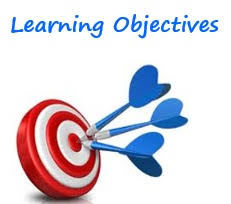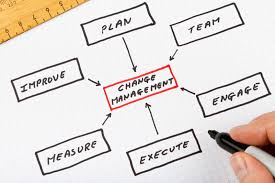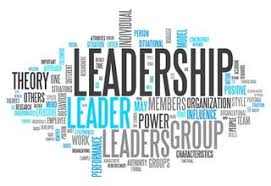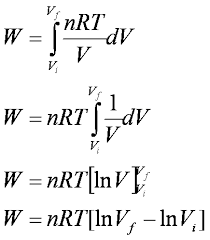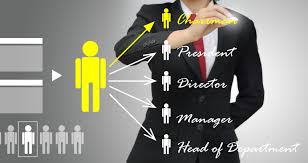
Importance of talent development
Order Instructions:
Learning objectives
The rationale behind your Personal Development Portfolio (PDP) is for you to reflect on the importance of talent development in all organisations; and, in particular, how you can contribute to this concept within your own organisation.
This PDP is divided into two submissions. The first part is due in Week 6, and the final part is due in the final week of the module, Week 8.
To prepare for this PDP assignment:
•Reflect on the readings you have encountered in the first 6 weeks of this module.
SAMPLE ANSWER
Importance of talent development
In the current knowledge economy, talent is not just crucial, it is also scarce. Even though a lot of executives report that finding and retaining talent is usually their main priority, a lot of organizations are still struggling to fill skilled positions. Senior managers of the company need to consider that an effective way of attracting and retaining talent entails creating an environment in which talented individuals can develop. Talent development is understood as building the abilities, skills and knowledge of other people and assisting them to develop and attain their potential so that the organization can succeed and grow (Popescu & Popescu 2012). This essay provides my reflection on the importance of talent development in all organizations, and the way in which I can contribute to this concept within my own company.
Retain top talent
Talent development helps organizations to retain their top talent. If employees leave a company due to a lack of talent development initiative, the company may be adversely affected. There would be the disruption of customer service, loss of company knowledge, in addition to loss of engagement and morale for the employees who remain. Offering opportunities for career development and talent development will ensure that when they desire a job shift, valuable workers are more probable to look in the company, and not somewhere else (Neves, Galvão & Pereira 2013). Talent development allows an organization to develop, retain and leverage its talent in order to realize its most important business goals. An organization should be able to envision, plan, execute and assess talent initiatives which produce real bottom-line results.
People who are talented often look for opportunities to grow, and they would move to companies which offer them sufficient opportunities to grow. Moreover, retention becomes a non-issue; if employees are developing more quickly than they could develop in any other organization, they will not leave since they have no reason to. If a business organization is really serious as regards attracting, retaining, and developing high-quality talent, then it needs to view itself as a growth platform for talent where employees could actually develop themselves much quicker than they could in any other company. In turn, this could create a self-reinforcing cycle as talent creates more growth opportunities (Castellano 2014).
Promotes lasting employee engagement and commitment and boosts productivity
Training and development of staff members starts with the process of onboarding. Typically, orientation is the initial substantive touch point for new employees. It offers an important opportunity for getting the new hires to get acquainted with the company – its policies, values, and culture. In addition, this is an opportunity to promote employee commitment and engagement by telling them how their position actually contributes to the overall business goals and mission of the organization (Holland, Sheehan & De Cieri 2010). Training is important in adding value to workers and to the company. Other than the benefits of more skilled workforce, training also promotes lasting employee engagement as well as commitment (Castellano 2014). Staff members who receive training obtain the satisfaction of mastering new skills as well as increasing their employability. Training shows the commitment of the organization to its staff members, makes employees feel valued, and promotes reciprocal commitment (Holland, Sheehan & De Cieri 2010). Workers nowadays expect to find direction and meaning in their daily work – not only tasks and jobs but meaningful careers as well as career goals. Staff members with access to talent development processes, tools and resources feel much more supported and engaged by the company. Additionally, staff members who drive their own development have a higher likelihood of being motivated and optimally productive consistently (Neves, Galvão & Pereira 2013).
More productive and profitable workers
Employees who are empowered are profitable and productive workers. Researchers have reported that employees who feel empowered by their organization’s training and development initiatives have greater innovation, higher morale, and better output. This also implies less absenteeism and turnover within the company (Downs 2012). Career development and talent development initiatives prepare workers to attain their professional objectives and align these professional goals with the objectives and needs of the organization.
Strengthens the succession pipeline
The backbone of any effectual process of succession planning is a talent pipeline which is well-prepared that could actually be drawn from at any given time. If an organization has an employee-driven talent development initiative, its top talent will have the chance of applying for major job positions which might be vacant. When the company makes such opportunities available and visible for every qualified employee, the organization would ensure that the most eligible people enter those crucial roles (Salopek 2014).
Creates a positive branding for the company
Companies which attain the most sustainable success are the ones which attract the best individuals to develop their strategies and realize their objectives and goals. Salopek (2014) reported that an effective talent development initiative will brand the company as an organization which truly cares about its staff members. In turn, this will help the company to constantly attract the best employees for the positions the company needs.
Fill internal skill and role gaps
Gaps in competency and skills, especially in crucial high-level roles, are becoming increasingly widespread as roles become more challenging and the demands of leadership become more and more intricate. Creating a process and culture which facilitates internal mobility is an effective way of filling these gaps from within the company (Neirotti 2013). It is worth mentioning that an internal mobility framework will enable workers who are qualified to find job positions that are most suited to them. It will also enable the company to fill these roles without significant expenditure associated with hiring new people from outside, training them, and onboarding them.
Own contribution to talent development
I can contribute to the concept of talent development within my own company by informing the HR manager about the talent development strategies that can be used in the organization in order to enhance talent development at the company and obtain the many advantages of talent development as described above. Some of these advantages include enhancing long-term engagement and commitment of employees, retaining top talent, and to have staffs who are more productive and profitable. I will also inform the HR manager about the importance of designing a work environment that helps workers in the company to improve their everyday performance. Since talented individuals often look for opportunities to grow, I will encourage the HR manager to create an environment wherein people who are talented can grow. For example, training programs can be used in helping employees to develop a particular knowledge or skill set.
Conclusion
To sum up, talent development is important because it brings the following advantages for the company: ensures retention of talent, improves the branding of the company, develops talented workers in areas of professional know-how, and develops guiding stars. Guiding stars refers to those star workers who can contribute to the success and growth of the company. Therefore, the key to sustained success lies in the capacity to keep these workers in the company, and in knowing, managing and developing their talents appropriately. Furthermore, talent development increases innovation as well as capacity for change in the organization.
References
Castellano, S 2014, ‘Opening Solutions to Talent Development’, TD: Talent Development, 68, 8, pp. 66-69, Professional Development Collection, EBSCOhost, viewed 18 September 2015.
Downs, LJ 2012, ‘Integrated talent management: Building a Strategy One Block at a Time’, T+D, 66, 8, pp. 42-47, Professional Development Collection, EBSCOhost, viewed 18 September 2015.
Holland, P, Sheehan, C, & De Cieri, H 2010, ‘Attracting and retaining talent: exploring human resources development trends in Australia’, Human Resource Development International, 10, 3, pp. 247-262, Business Source Complete, EBSCOhost, viewed 18 September 2015.
Neves, C, Galvão, A, & Pereira, F 2013, ‘Guidelines in human resources management’, Tourism & Management Studies, 2, pp. 420-429, Hospitality & Tourism Complete, EBSCOhost, viewed 18 September 2015.
Neirotti, P 2013, ‘How do human resource development strategies influence performance? A contingency perspective’, Journal Of General Management, 39, 2, pp. 3-34, Business Source Complete, EBSCOhost, viewed 18 September 2015.
Popescu, M, & Popescu, A 2012, ‘The development of human resources in organizations’, USV Annals Of Economics & Public Administration, 12, 2, pp. 36-42, Business Source Complete, EBSCOhost, viewed 18 September 2015.
Salopek, JJ 2014, ‘Showstopping Learning’, TD: Talent Development, 68, 10, pp. 56-59, Professional Development Collection, EBSCOhost, viewed 18 September 2015.
We can write this or a similar paper for you! Simply fill the order form!




